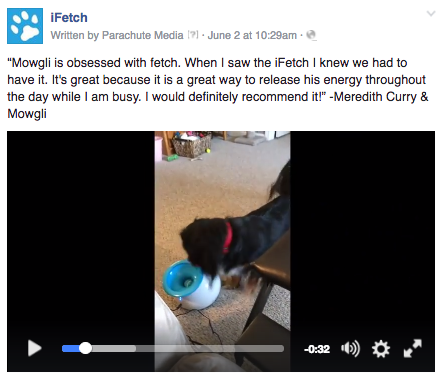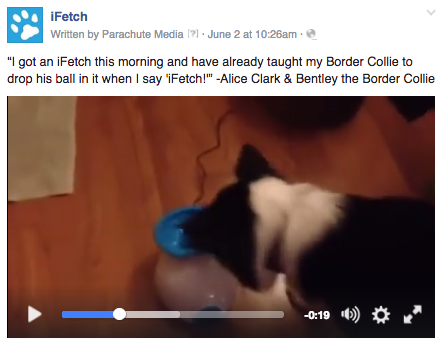Think about the last time you made a serious purchase.
Perhaps it was for your weekend vacation to celebrate a recent birthday. You spent hours researching the best flights, the cheapest hotels, and the best attractions to visit while in town.
Did you find the result with the least amount of dollar signs and hand over your card information? Probably not. Chances are, you were one of the 67% of users who read the reviews left for each of the above businesses (and, my educated guess is that you didn’t book the hotel with 1 star and comments that mentioned broken A/C units and mysterious stains on the bedding).
Not only did you see that reviews were left on the websites, but maybe you also did some digging on social.
Despite all of the advertisements, news articles, and videos on how to make a recipe, there’s still something “social” about social media.
As a brand, if you think that it only takes your marketing dollars to win the audience over into buying into your product or service, you’re wrong. Social media users still value other users’ experiences and opinions of your brand. This is more than just the number of stars your Facebook business page has as a rating score. Users find it equally as valuable as to how the brand responds to their community.
Effective Community Management
Community management is the term we give to our system of responding to users on our clients’ social channels, ranging from liking a comment, responding, or replying to a direct message. When implementing this practice in your social strategy, keep this at the forefront of your mind: regardless if the message is negative or positive, remember that this user went out of his or her own way to contact the brand. That says a lot. Why is that?
If the message is positive in nature, congrats. You’ve got an easy notification. Appreciate that your customer is loyal enough to your brand to share their experiences with everyone on the social platform. Recognize the user and show appreciation for their message – receiving a notification (quickly) from a brand excites the user, and increases the likelihood of their return to your brand.

In response to one of our video ads promoting job openings at an Edley’s Bar-B-Que location, a user took the time to let us know of their appreciation for including captions on the video.
What about negative feedback?
Now, for the other side of the coin: negative feedback. This can manifest in many forms, from a bad review resulting from terrible service, to an entire attack on the brand. Remain calm, and remember what I said earlier. There’s a good chance that the user expects more out of the brand, and you should appreciate the insight they are providing you. (Who knows? Maybe you didn’t see this issue previously, and never would have known without this comment.) It doesn’t matter how great your presence is online – no one is immune to negative feedback. (Yes, we’ve had our fair share of it as well.) You can check out how we handled a similar instance on Twitter here.
Something we’ve learned from conversations that have started from customer complaints is that these users (usually) aren’t trolls seeking out confrontation for pure enjoyment – they have spotted an issue with your brand, and would like to see it resolved. Acknowledge the comment, encourage a continued conversation in a private message, and act. Don’t tell the consumer that you’ll make a change and forget about it.
Take the conversation to direct message
The purpose of moving the conversation to a direct message is multi-faceted. As a common practice, we like to offer an incentive of sorts to the user as an extended apology for their negative experience, and the user’s contact information doesn’t need to be public. As far as maintaining a positive reputation with the public, posting a similar comment like the one below is enough for users to see that your brand is proactive, responsive, and caring of their audience.
The Power of Testimonials
Another way that user opinions can shape the success of a brand is by the use of testimonials. More than just a positive comment or review, testimonials provide users an in-depth, first-hand look of how your brand positively impacted their lives. While large brands like Proactiv may come to mind, we’ve tested out the effects of using testimonials with our clients’ social advertising strategy.
During a conversion campaign for client iFetch, we paired customer testimonials with videos of the product in action.


Because we practice what we preach, we A/B tested two different testimonial/video combinations. What we found is that the first testimonial, which provided an in-depth narrative of the user’s experience with the product, sold 5x more products than the second one.
Developing Your Own Community Management Plan
Now that you’ve seen how an online community can impact your brand, both with reputation and by profits, it’s time to develop your own community management plan.
- Develop a written strategy for how to appropriately respond to user comments left on your brand’s social media accounts. Make sure it accurately represents your brand’s voice and guidelines, because every business is different.
- Look for ways to encourage customers to leave online feedback for your business. Does your industry thrive on Google Reviews? Have you found that Facebook reviews are more powerful to your audience? Do some internal analysis, and have customers leave feedback – both good and bad. You’ll find that overwhelmingly, users will leave positive comments when asked by the brand to review them, but it also gives you an opportunity to grow as a business from any criticism that may occur.
- Implement these practices as soon as possible!
By fostering a community online surrounding your brand, you’re reminding your customers that you value their input. If you think this is an area that your business or brand needs improvement, let us know.


